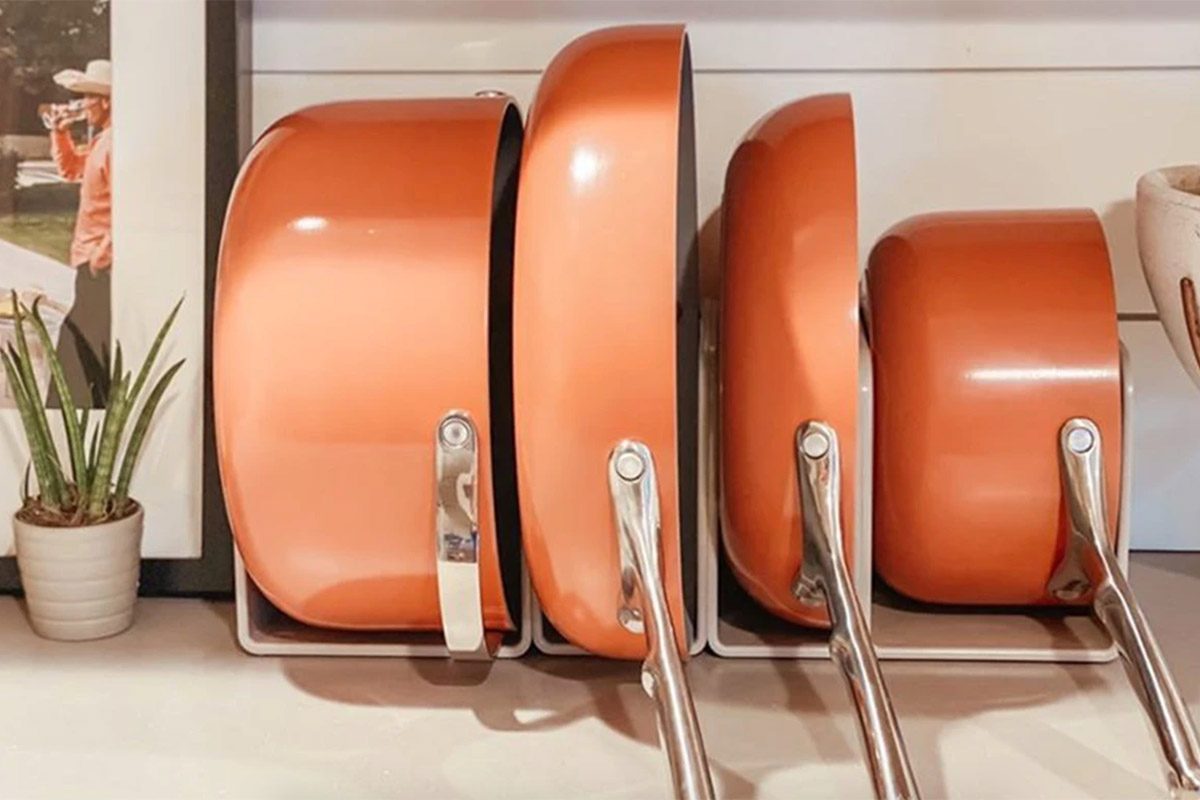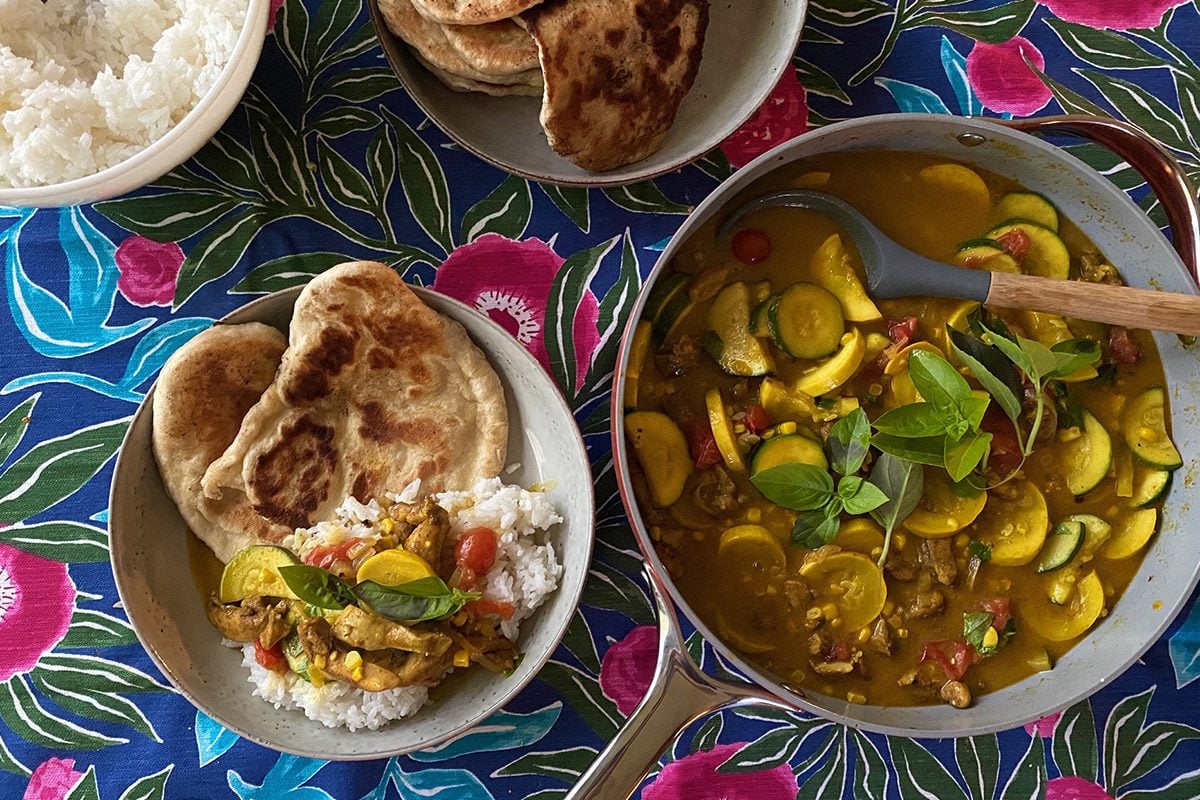For serious home cooks, choosing the right cookware can be a challenging decision. You want the set you choose to be versatile enough to take you from quick, weeknight dinners to relaxed weekend brunches and everywhere in between. The right set should also be durable, suited to your cooking style and long-lasting. That’s a tall order!
After doing some research, I decided to retire my aluminum set and upgrade to ceramic cookware. Specifically, I gave these gorgeous pans from Caraway a try.
What Is Ceramic Cookware?
Ceramic cookware is metal cookware that’s been finished in a ceramic coating. This coating is what makes these pans stand apart from their stainless steel, aluminum and other nonstick cousins. The ceramic finish on these pans is free of PTFE and PFO (commonly called Teflon) as well as heavy metals. The mineral coating on ceramic pans is naturally slick so your foods won’t stick.
This coating also helps distribute heat evenly across the cooking surface, so you can be sure that your food cooks evenly whether it’s in the center of the pan or at the edges.
Why Caraway Cookware?

Part of what made Caraway’s set so appealing to me was that the company offered a streamlined set of cookware: a Dutch oven, a saute pan, a saucepan and a frying pan with corresponding lids. While I’m a serious cook—I cook nearly every day—I don’t have a large kitchen. Paring down my cookware to these essentials was pretty attractive.
To keep the cookware organized, Caraway includes a pot rack and storage solution for your lids. Everything stores on a single shelf in less than 17 inches of space. That can provide more breathing room in the cupboards or just some more space for some pretty Bundt pans.
Also, Caraway’s cookware line is oven safe up to 550ºF, meaning that the pans can easily go from cooktop (you can use it on electric, gas or induction burners) right into the oven to finish off a dish. That high heat rating definitely gives me some peace of mind since most other nonstick cookware is only safe to about 400ºF or so.
And how could I forget a major appeal of this brand in particular: the colors. Yes, performance comes first, but if I can find a terrific product and it’s gorgeous, I’m sold. Caraway offers its cookware in sage green, navy, cream, pale gray and a pink tone called Perracotta.
How Did It Work?

Opening up my new cookware, I decided to put it right to work making dinner for the evening. Using a bounty of fresh veggies from the garden, I put together a quick curry with a side of coconut rice.
Even with the best nonstick pans, rice—particularly sticky coconut rice—has a tendency to cling to the pan. I can’t tell you how many times I’ve rewashed my old saucepan after finding rice residue on the bottom (an embarrassing amount). But after letting this ceramic pan cool, I washed it with warm sudsy water and let it dry. Much to my surprise and delight, it was spotless. As for the curry packed with turmeric, a spice that has a tendency to stain hands and dishtowels, the leftovers slid right out of the pan into a container for lunch—no yellow stains to be found.

Later in the week, I whipped up some pork and ginger lettuce cups. The large saute pan heated quickly (way faster than my cast-iron skillet) and evenly to brown up the pork. The pan could easily accommodate a double batch of this fresh and easy dinner—maybe even a triple batch if I had a lot of mouths to feed.
I’ll admit that after munching on these all evening, I was worried about washing away the hoisin sauce that so often likes to linger in pans. Just like the other dishes I made, cleaning these ceramic pans was a breeze.
I’ve only had these pans for a short while, but working with them has been a real joy. They perform well, clean up easily and look beautiful on the table. Having pots and pans that double as serveware is a big plus for me—fewer dishes to wash!
Some More Ceramic Considerations
A few things to think about before you decide to buy yourself a set of pretty ceramic cookware:
- Hand washing is recommended: Keep this cookware out of the dishwasher so it lasts for a long time. The good news here is that the nonstick effect of ceramic cookware makes it a breeze to clean up. While you’re at it, skip the abrasive scrubbers. A sponge or dishcloth will do the trick.
- Metal utensils are out: If you’re used to cooking with other nonstick cookware, this advice is pretty familiar. To avoid scratching the ceramic coating, stick to wood, nylon and silicone utensils.
- Let it cool down: While it can be tempting to toss a hot pan right into the sink after dinner, it’s best to let ceramic cookware cool down before dousing it in the sink. Sudden shifts in temperature can impact the durability of any cookware—not just ceramic. It’s the same reason you should be careful with extreme temperatures and your Pyrex dishes.
- The price tag: Ceramic cookware is more expensive than a basic aluminum cookware set. Getting yourself a set is an investment, but a worthy one for serious home cooks.
So, Should You Buy Ceramic Cookware?
If you’re in the market for new cookware like me, definitely check out ceramic-coated options. These pots and pans perform exceptionally well: They heat quickly, distribute heat evenly, are versatile (hello, stovetop-to-oven cooking) and are easy to clean. Those are major considerations when shopping for a new set.
Sure, washing dishes by hand is a chore many prefer to skip, but the extra effort is worth the performance to me in this case.
Right now, I’m looking forward to all the great dinners I’ll be making and how gorgeous they’ll look served up in these pink pans.
The post Is Ceramic Cookware Worth the Investment? appeared first on Taste of Home.
Lisa Kaminski